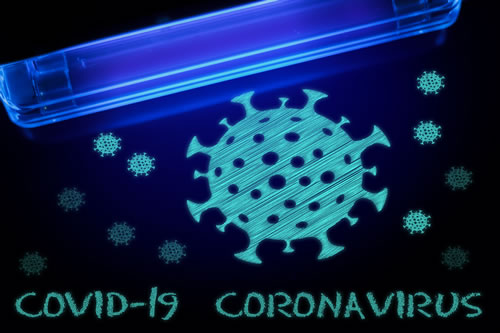Various states across the U.S. are relaxing the rules for business reopening. These staged actions include a wider range of businesses at each iteration, including many retail and food service establishments. With this movement comes the need for businesses to change their models and practices, including new protocols for distancing and cleaning.
For example, many retail stores will instill multiple requirements, including limiting occupancy numbers inside the store, checking customer and employee temperatures upon entry, and cleaning various touch points. Restaurants will use stickers to denote six-foot patron spacing, eliminate any self-service options, offer hand sanitizer, change how patrons wait for seating, and implement dozens of other protocols to adapt to the new reality. All these changes are necessary to reduce exposure as well as make consumers more comfortable returning. These adjustments will require staff training, committed managers, and the right tools. Businesses anticipating reopening have another tool to utilize for efficient and reliable sanitization—UV light.
The Power of Light
The typical Clorox or Lysol brand cleaning wipe contains a disinfectant solution that needs to “dwell” on the wiped device for an extended period. There needs to be visible wetness from the product onto the surface. The solution needs this time to break down pathogens. Many users neglect to follow the guidelines for wipes usage, both in terms of dwell time and utilizing them for too many surfaces, which can then move germs from area to area. Performing sanitization through manual wiping takes time and is labor intensive. Businesses that are already short-staffed and under financial strain due to the pandemic might struggle to keep up with these sanitization practices without additional help.
While liquid cleaning solutions will of course remain necessary for soiled items and surfaces, their usage for most items is replaceable through UV-C light applications. UV-C light producing machines create wavelengths between 100 and 280nm, which are the ranges necessary to inactivate various microorganisms. The DNA and RNA of these pathogens absorb the light, which causes disruptions at the molecular level which shuts down their ability to replicate and then infect. These machines provide 360-degree cleaning and can reach into crevices that are often not touched by cleaning wipes.
Multiple Practical Applications
Microorganisms exposed to antibiotics and disinfectants develop resistance over time, however they are unable to build any resistance to UV-C lights. Their simple operation and non-resistance qualities make these lights ideal for multiple reopening businesses and practices that want to protect customers and staff.
Within the restaurant sector, UV-C light disinfecting machines are ideal for items including menus, ordering tablets, and other shared-used pieces. Waiters utilize pens, badges, ordering terminals during their shifts. Manually cleaning those items with wipes is difficult and unreliable, especially as waiters adapt to new social distancing and other procedural changes. UV-C sanitization works quickly, so staff members can insert various items throughout their work schedule, ensuring pathogen loads on food and other surfaces are reduced. Since the machines work in under a minute, they can also provide sanitization for customers’ car keys, wallets, and for phones that are often laid on dining tables.
Restaurants and shops can offer customers phone disinfection upon entering and leaving the restaurant. Additionally, items like menus, tablets, staff badges, keyboards, keys, pens, and other small items used at these businesses can quickly and easily be disinfected using UV-C products. This will keep both staff and other customers safer.
In medical settings, UV-C systems provide practitioners with a new tool to reduce exposure to a range of pathogens, not just coronavirus. For example, most patient exam rooms feature computer terminals and shared keyboards for logging in patients and adding clinical notes. These terminals are utilized by multiple nurses and physicians in a day, and clinicians also utilize tablet devices and mobile phones to perform many of the same functions. Frequent UV-C sanitization of these devices can eliminate pathogens including the coronavirus, limiting the spread of the disease among healthcare workers and patients.
Various products
Products such as the cost-effective Cubby+ and Defender from UV-C provider Vioguard offer either an integrated keyboard tray, which creates a schedule to automatically pull the keyboard back into the device for sanitization or allowing the users own keyboard, tablet or phone in a economical manual system for sanitization. This process takes (about) less than 60 seconds and eliminates 99.99% of pathogens lurking on the keyboard. These products use a lock-tight UV-sealed enclosure to conduct the sanitization, which shields users from any potential harmful effects from UV light exposure.
Benefits
The benefits of improved sanitization would apply to the thousands of closed optometry offices, dental practices, and other medical facilities that are not working with COVID-19 patients. On the patient side, tablets used by patients to enter health and insurance information can also receive complete sanitization with UV-C, removing fears for patients who are hesitant to receive services during the pandemic. Other shared use and clinical items can also run through UV-C machines to further cut down on a facility’s overall viral load.
As businesses reopen, UV-C will likely become a commonplace sanitization practice and a part of everyday life. The New York City subway system is piloting larger-scale UV light solutions for subway cars and buses. The Pittsburgh International Airport is the nation’s first to implement cleaning robots with UV lights to sanitize walkways. These adoptions further highlight the need for tech solutions to slow the pandemic and the role UV-C lighting will play in reducing incidence of COVID-19 during the economic reopening.















